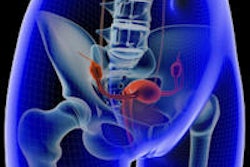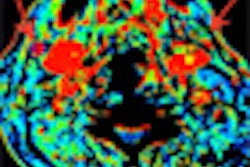
NEW YORK (Reuters Health), Jan 27 - Uterine fibroid embolization in young women does not accelerate a decline in ovarian reserve as they age, Italian researchers say.
"Because an increasing number of reproductive-aged women with symptomatic fibroids consider this nonsurgical treatment modality, our findings of no adverse effects of uterine artery embolization on ovarian function may be of help to the counseling of patients and clinical decision making," Dr. Giovanna Tropeano from Universita Cattolica del Sacro Cuore in Rome told Reuters Health by e-mail.
In 2004, Dr. Tropeano and her colleagues reported on hormonal, ultrasound, and clinical markers one year after bilateral uterine artery embolization in 36 women ages 26 to 39 years. They realized that in women of that age, "it might take more than 12 months for subtle damage to become identifiable on conventional ovarian reserve parameters," and so they have continued to follow this cohort, along with 36 matched controls.
In a January 13 online paper in Fertility and Sterility they report their five-year follow-up data. They note that whereas all 36 pairs were evaluated at 12 months, 29 pairs were studied at 24 months, 23 at 36 months, and 20 at 48 and 60 months.
During the first 12 months, follicular stimulating hormone (FSH) levels did not change significantly among patients or controls, according to the paper. Thereafter, both groups had similar progressive increases in FSH. In each group, the difference from baseline reached statistical significance at 36 months. By 60 months, mean FSH levels were 7.42 IU/L in patients (up from a baseline mean of 5.1 IU/L) and 7.9 IU/L in controls (up from 5.24 IU/L at baseline).
Longitudinal changes in mean estradiol levels were also similar between groups, progressively increasing to reach statistical significance at 60 months among patients and at 48 months among controls.
There was no difference between the two groups in mean antral follicle count or ovarian volume over time, the authors report. The difference from baseline became statistically significant at 60 months in both groups.
"Although the study results contrasted sharply with earlier suggestions that uterine artery embolization may affect ovarian function, they were in line with our clinical data from a 10-year experience with this treatment," Dr. Tropeano said.
"We have planned to continue our research on the reproductive outcome of uterine artery embolization, with particular reference to the ovarian and endometrial function," she added.
By Will Boggs, M.D.
Fertil Steril 2010.
Last Updated: 2010-01-26 12:15:52 -0400 (Reuters Health)
Related Reading
Laparoscopically assisted cryoablation effective for uterine fibroids, December 29, 2009
Hysterectomy most cost-effective fibroid treatment, March 20, 2009
Age-related changes in uterine fibroids differ between black and white women, December 1, 2008
MRgFUS effective, safe for outpatient fibroid treatment, December 1, 2008
Both UAE, hysterectomy improve quality of life, February 20, 2008
Copyright © 2010 Reuters Limited. All rights reserved. Republication or redistribution of Reuters content, including by framing or similar means, is expressly prohibited without the prior written consent of Reuters. Reuters shall not be liable for any errors or delays in the content, or for any actions taken in reliance thereon. Reuters and the Reuters sphere logo are registered trademarks and trademarks of the Reuters group of companies around the world.



















